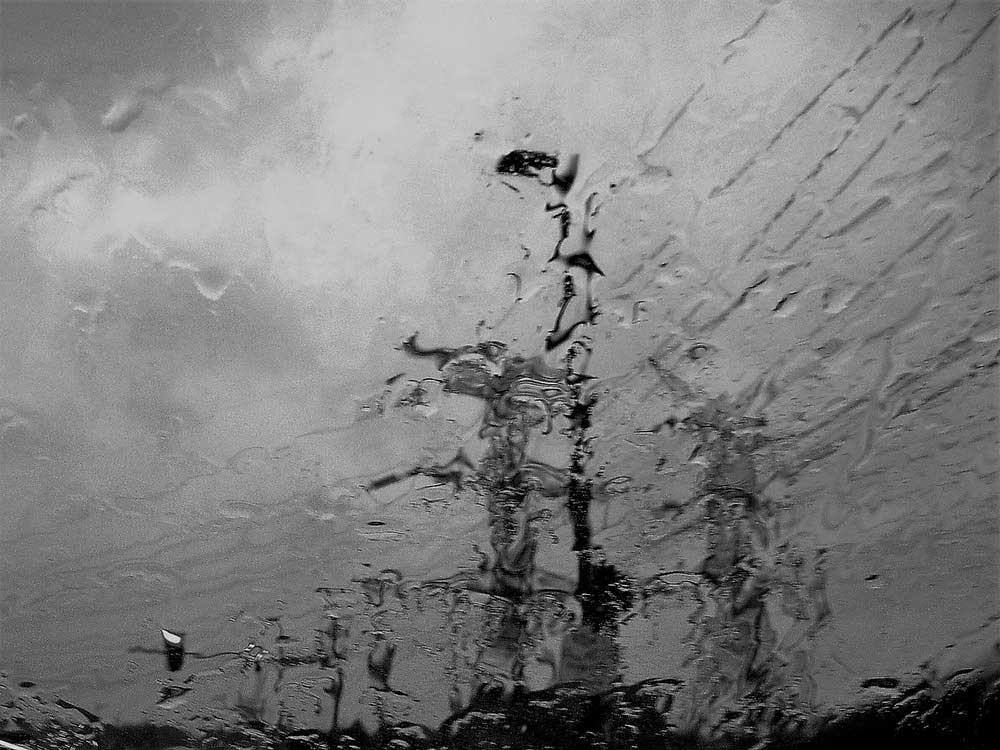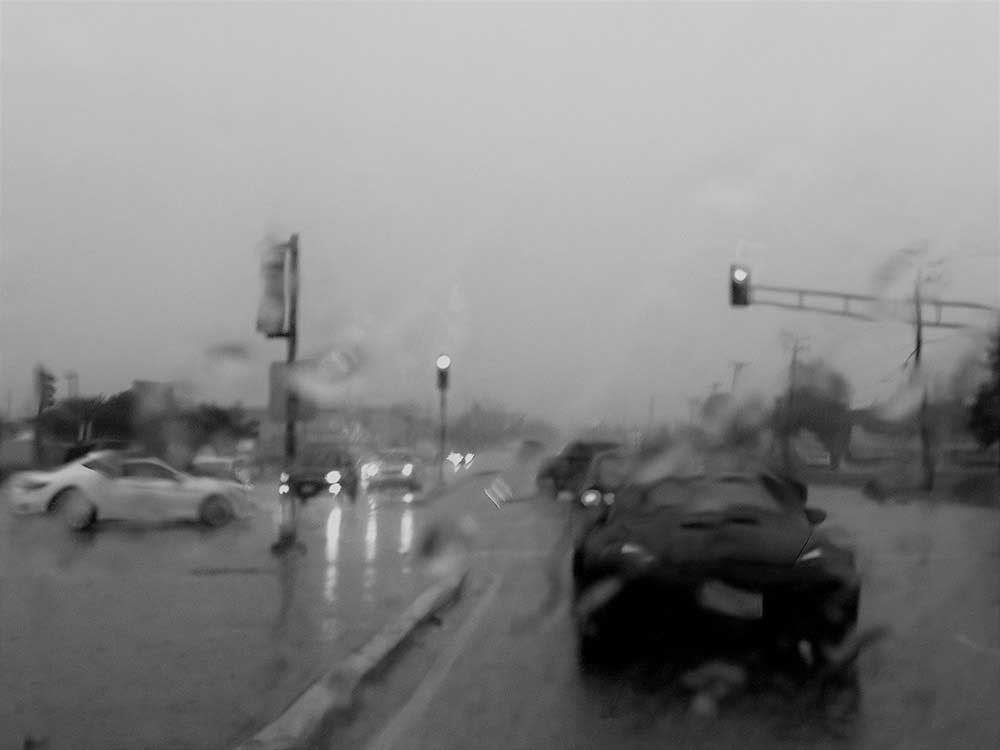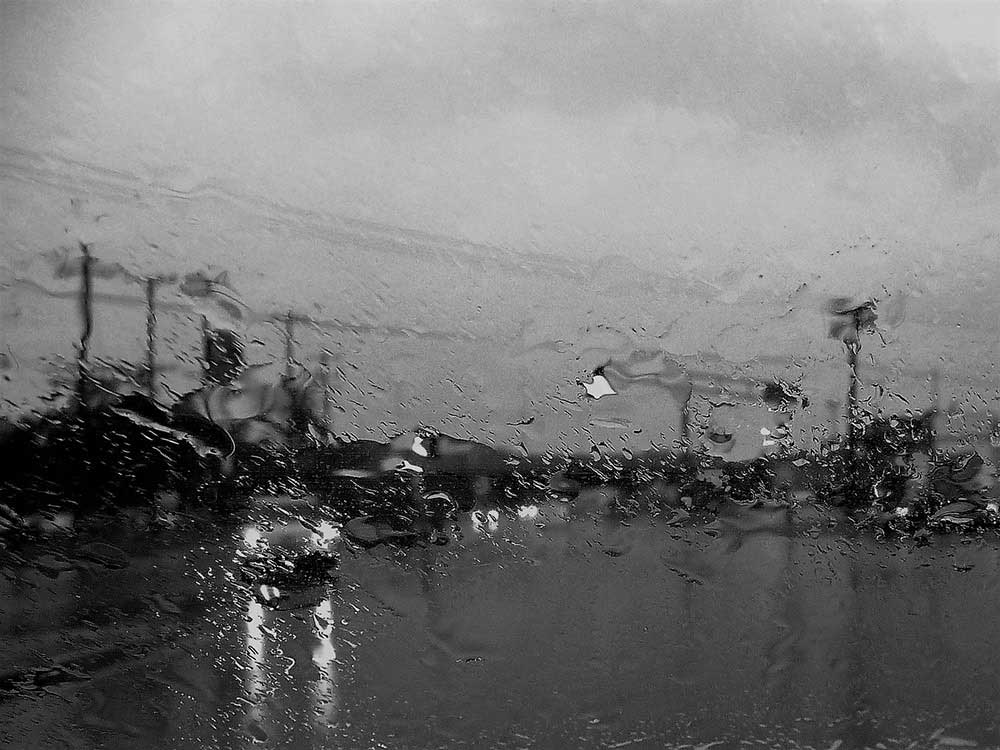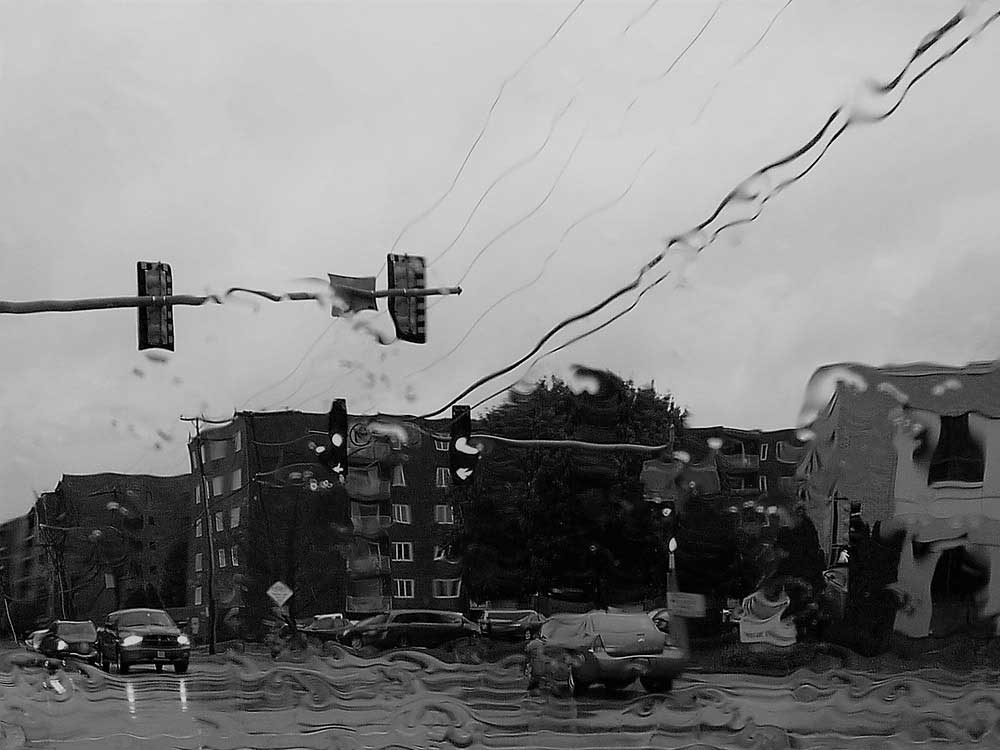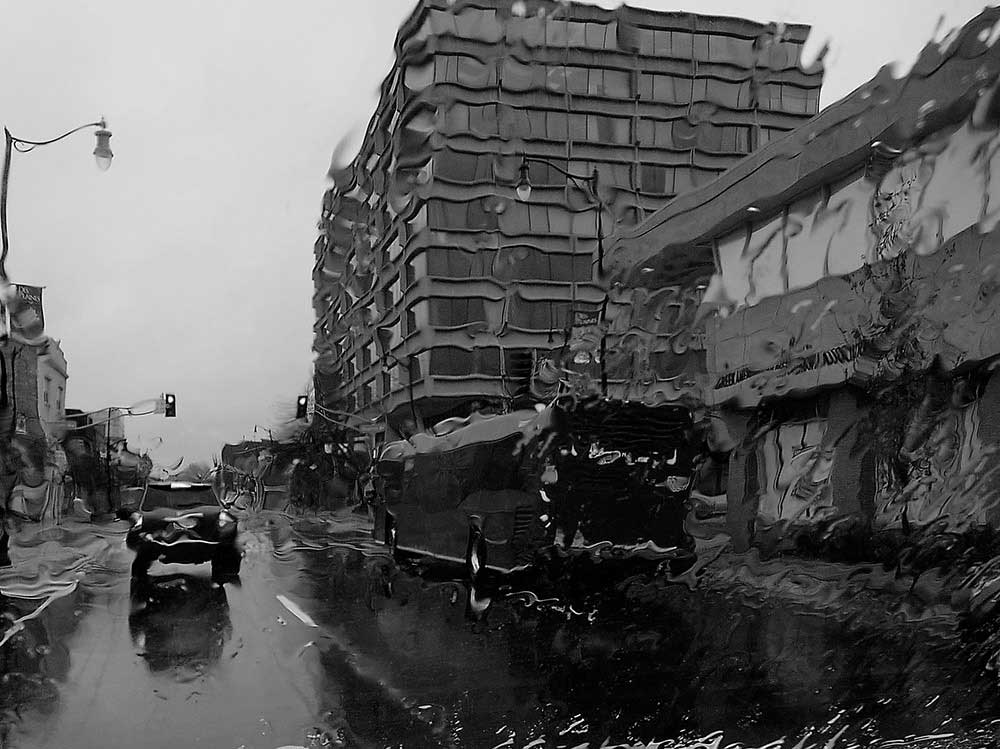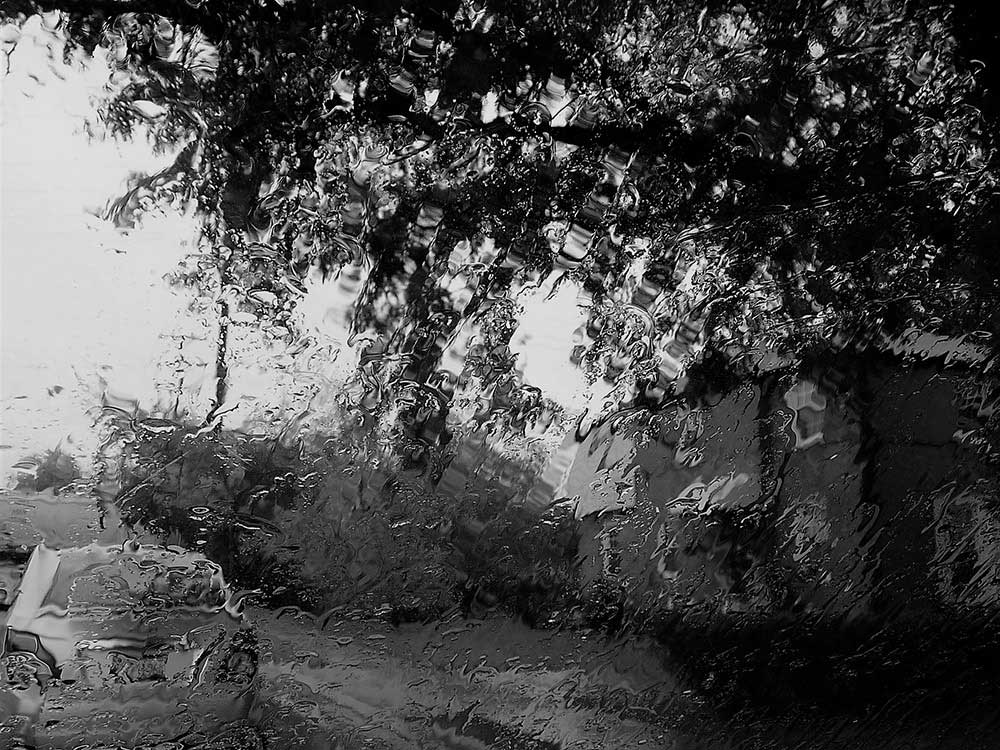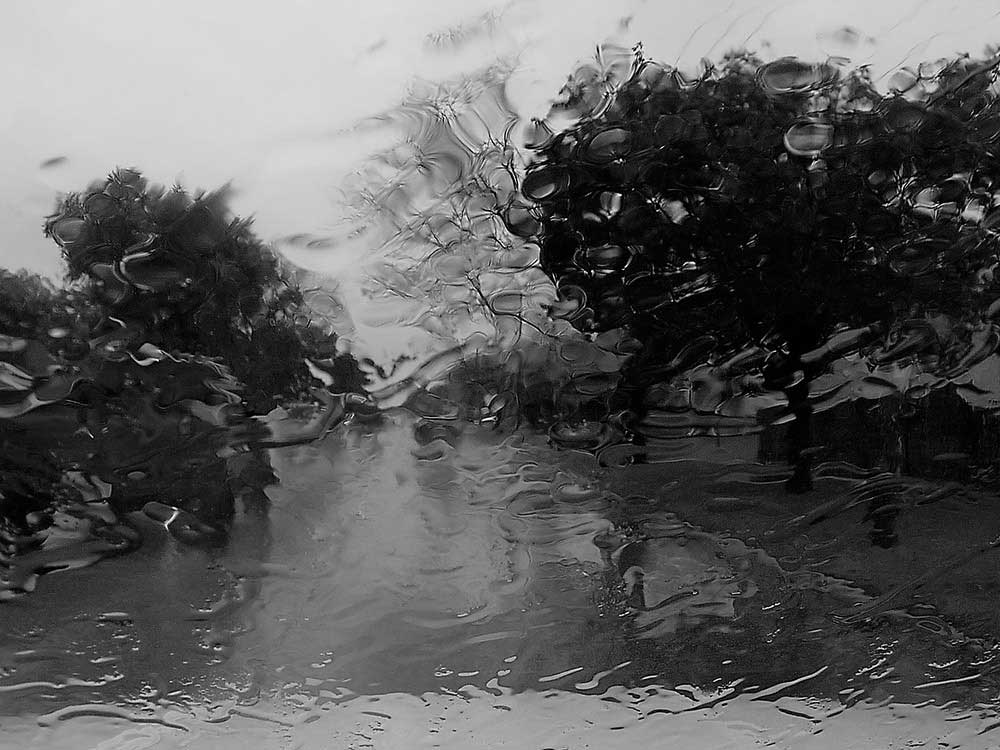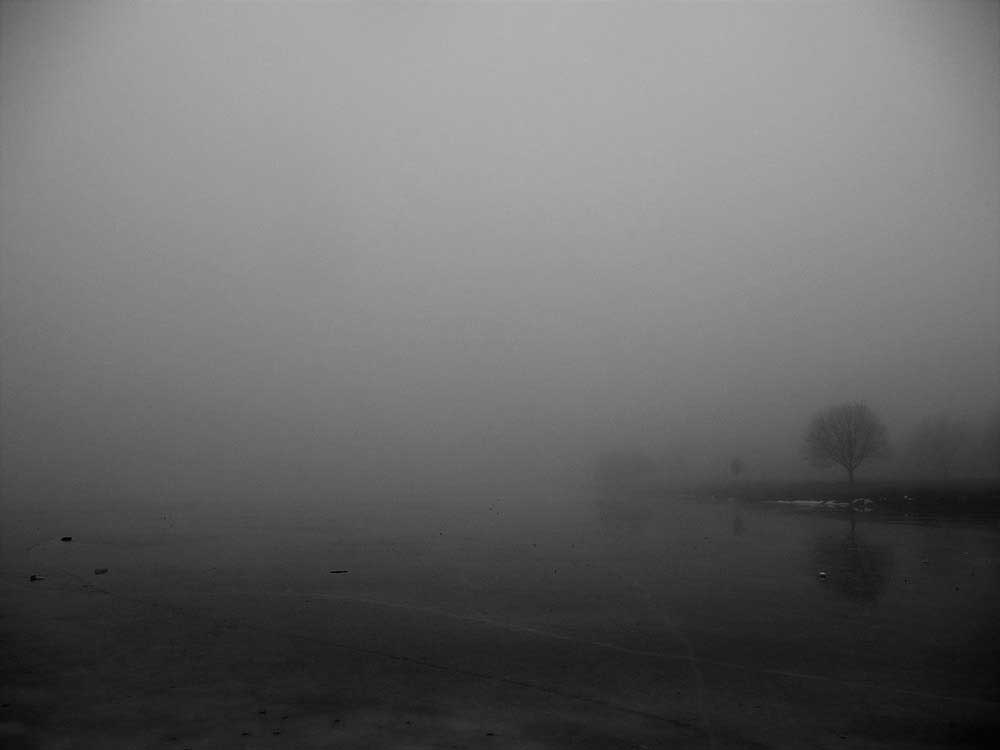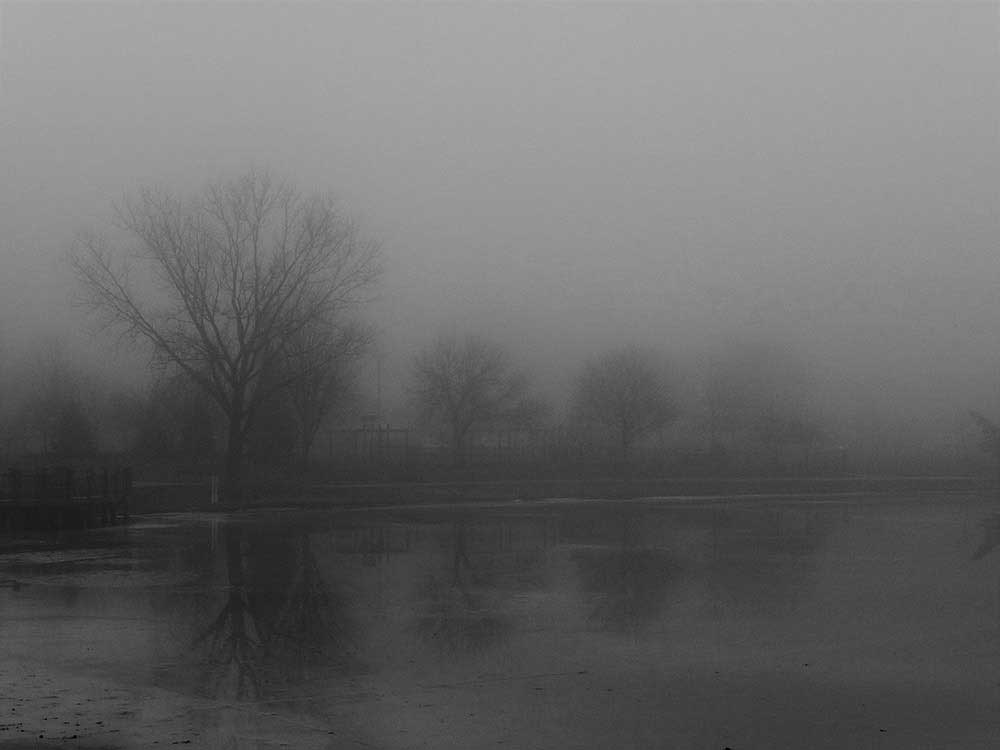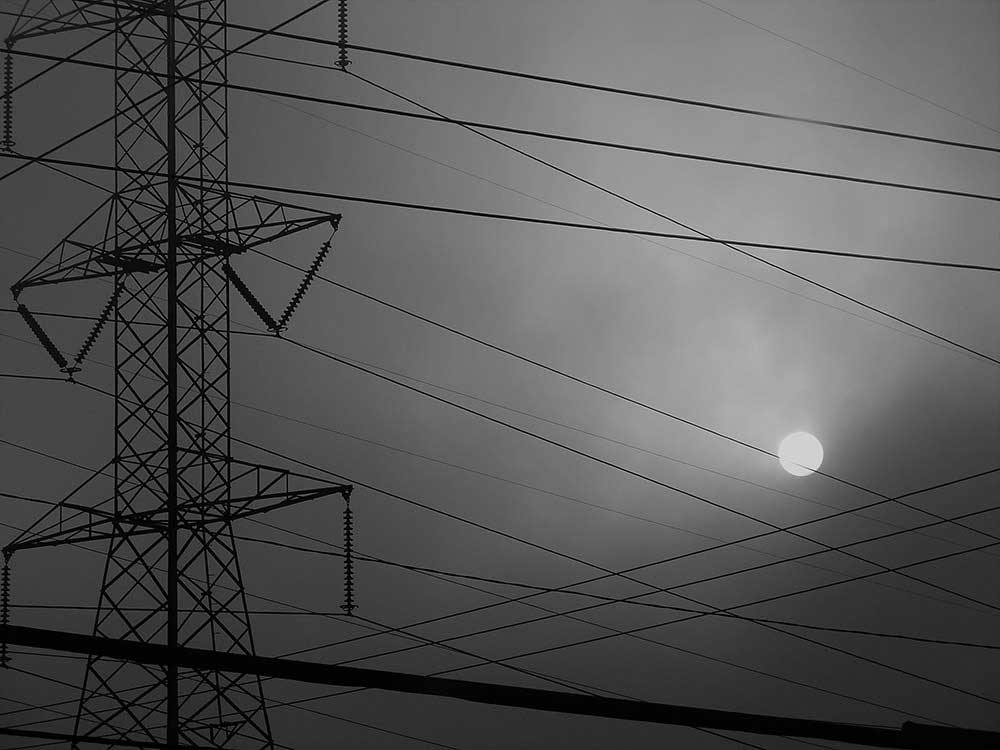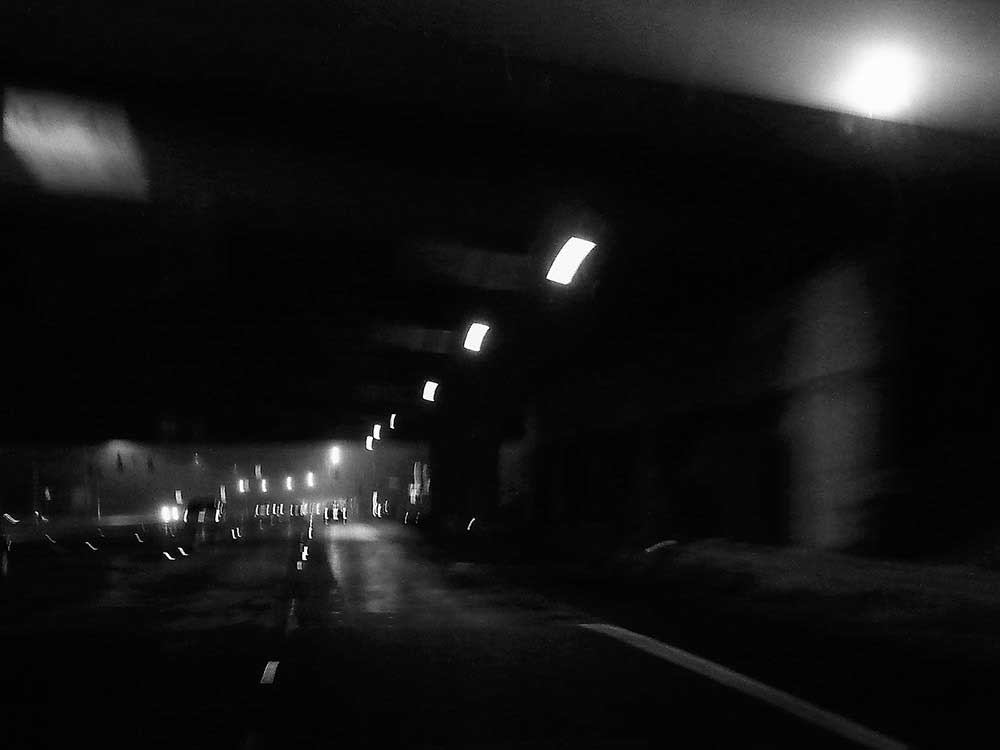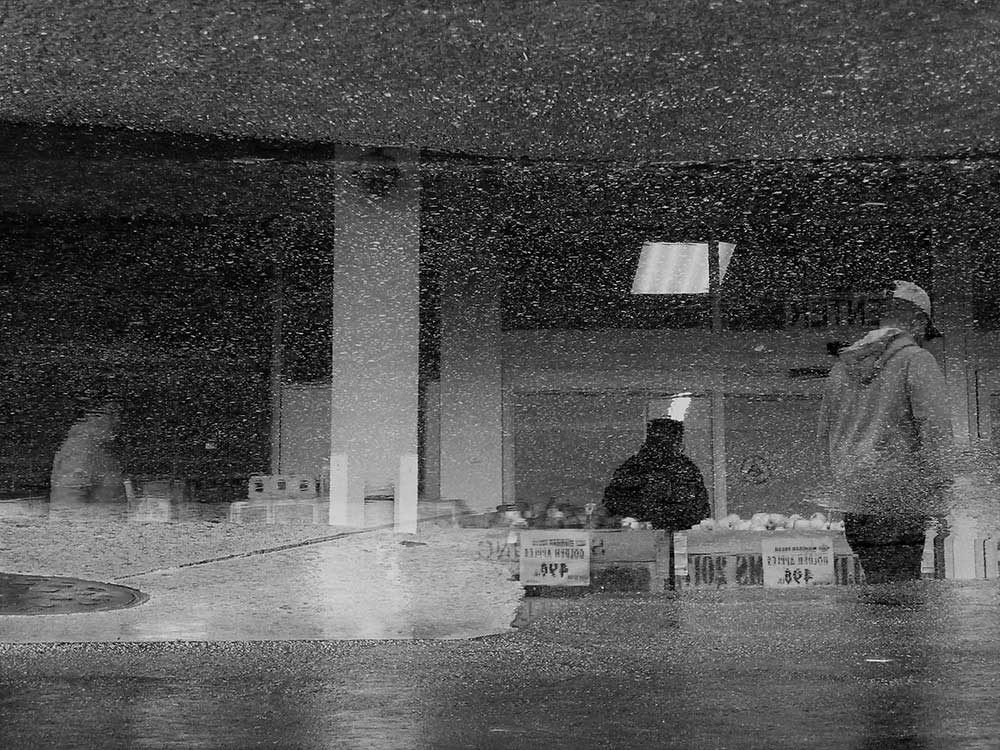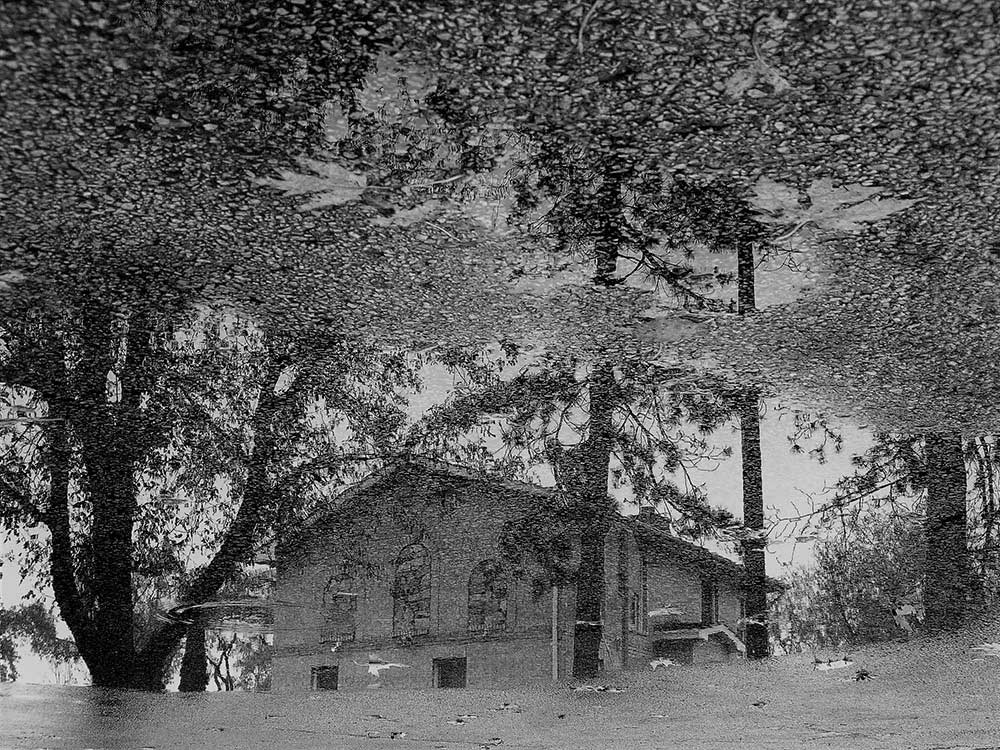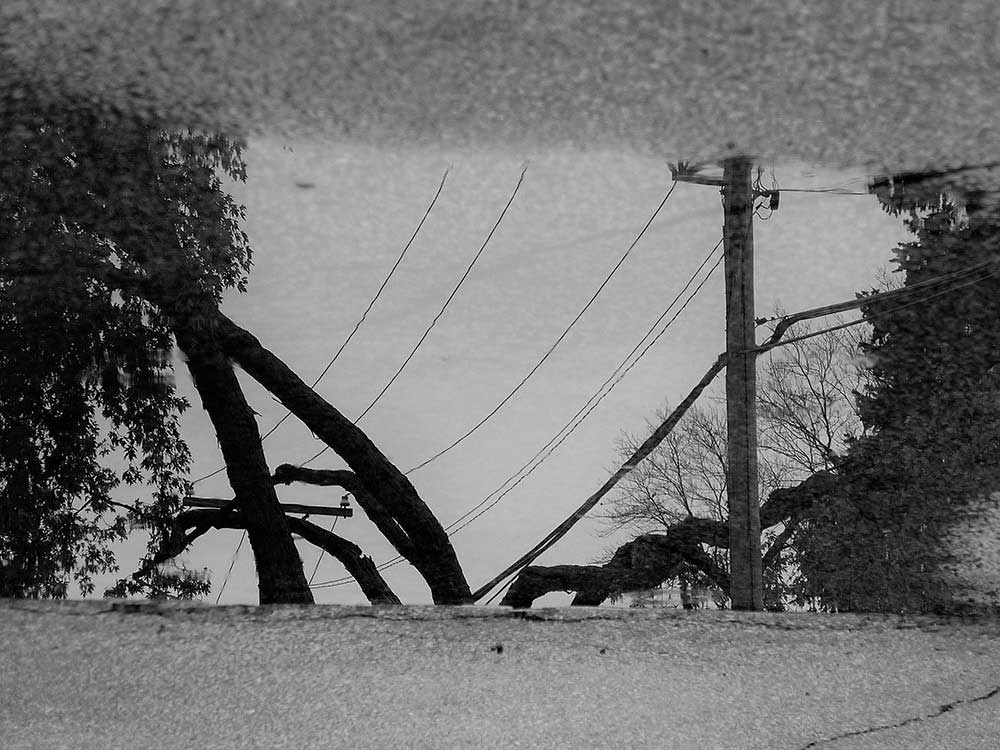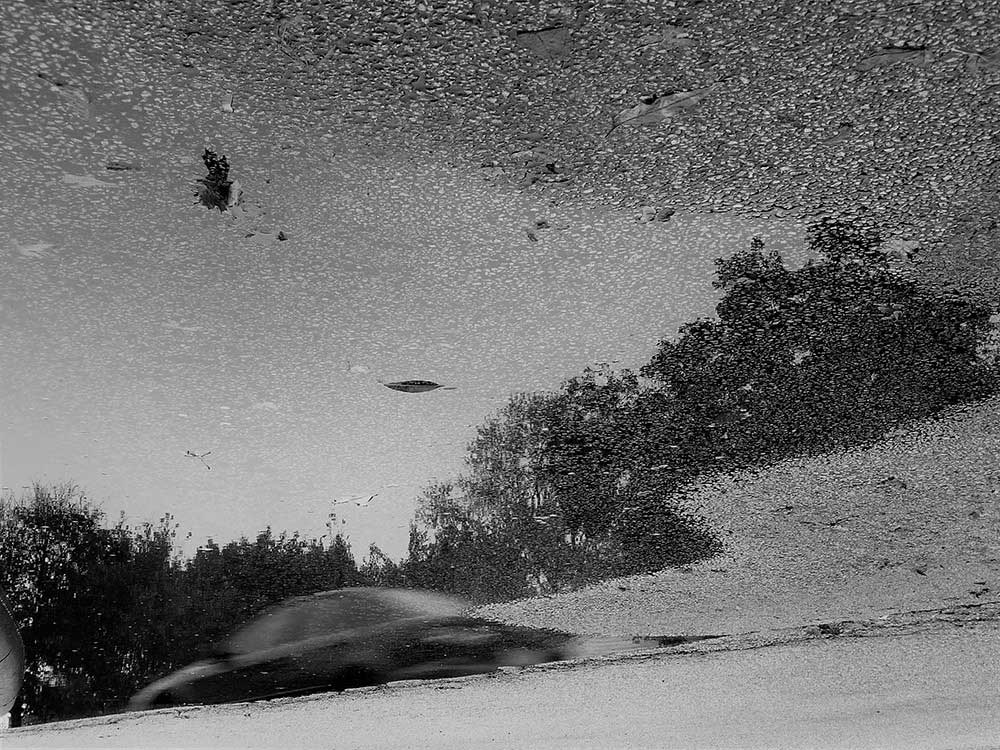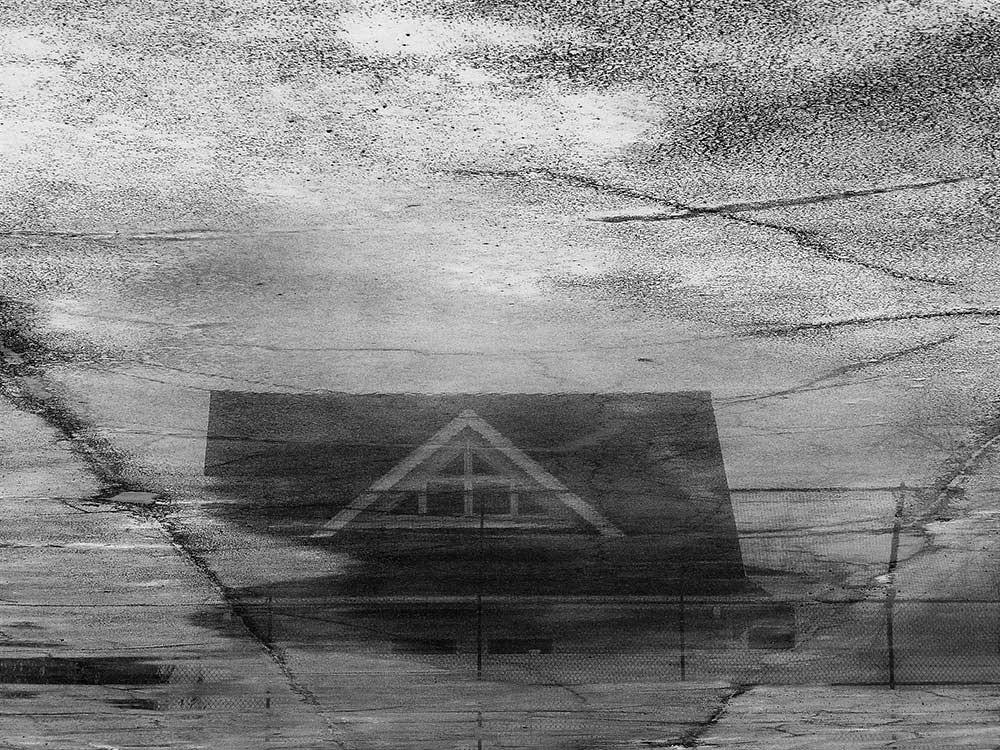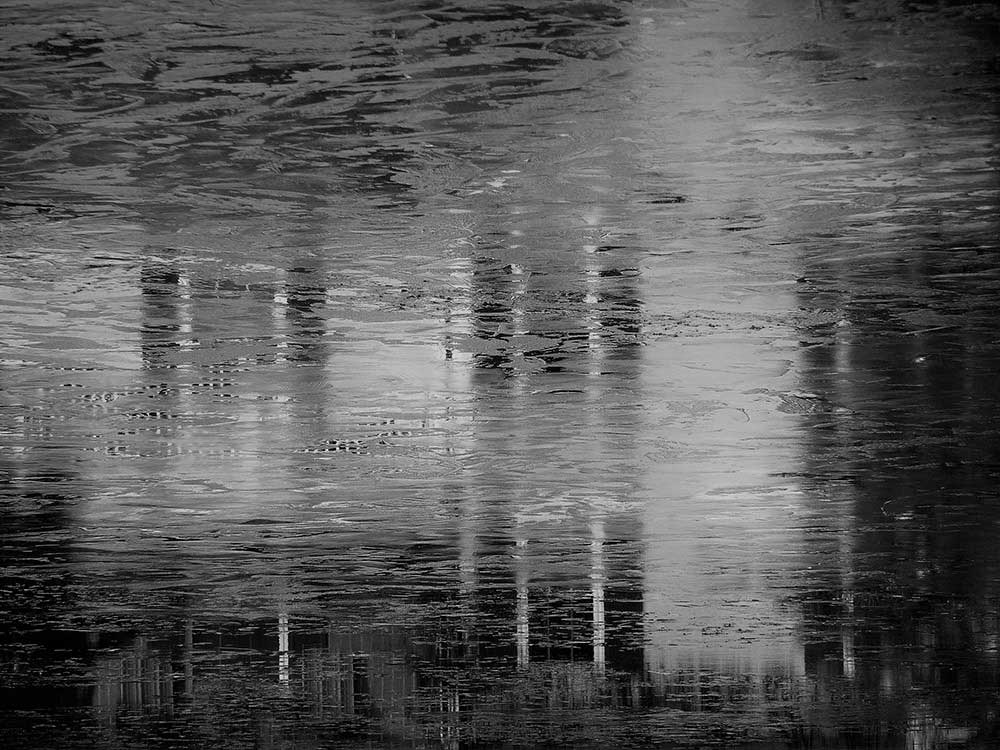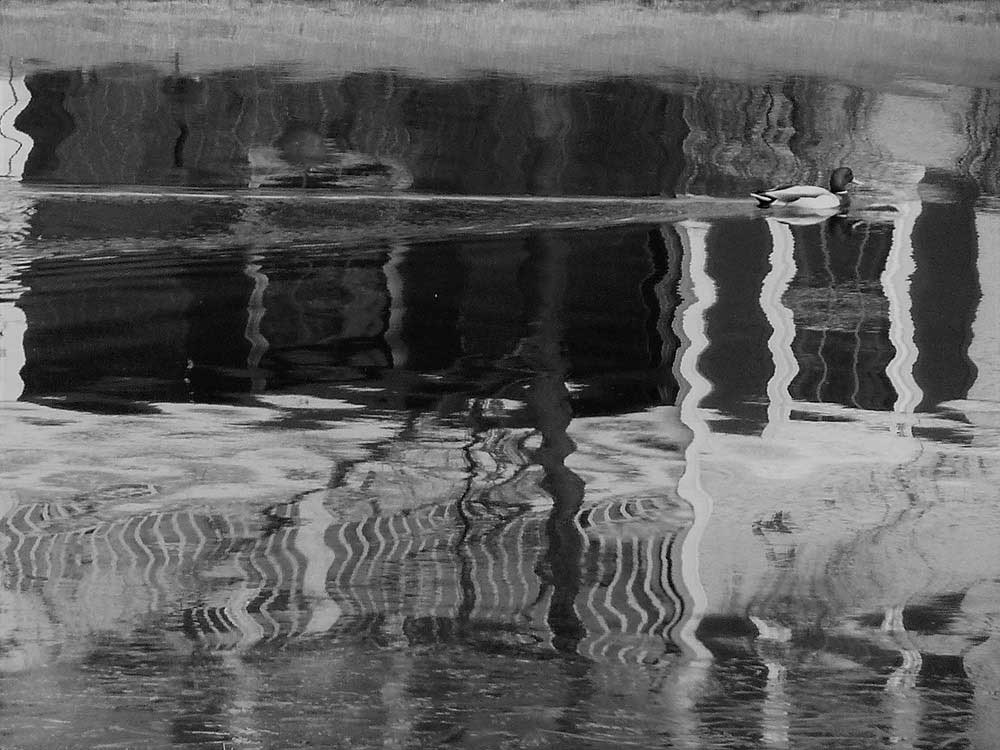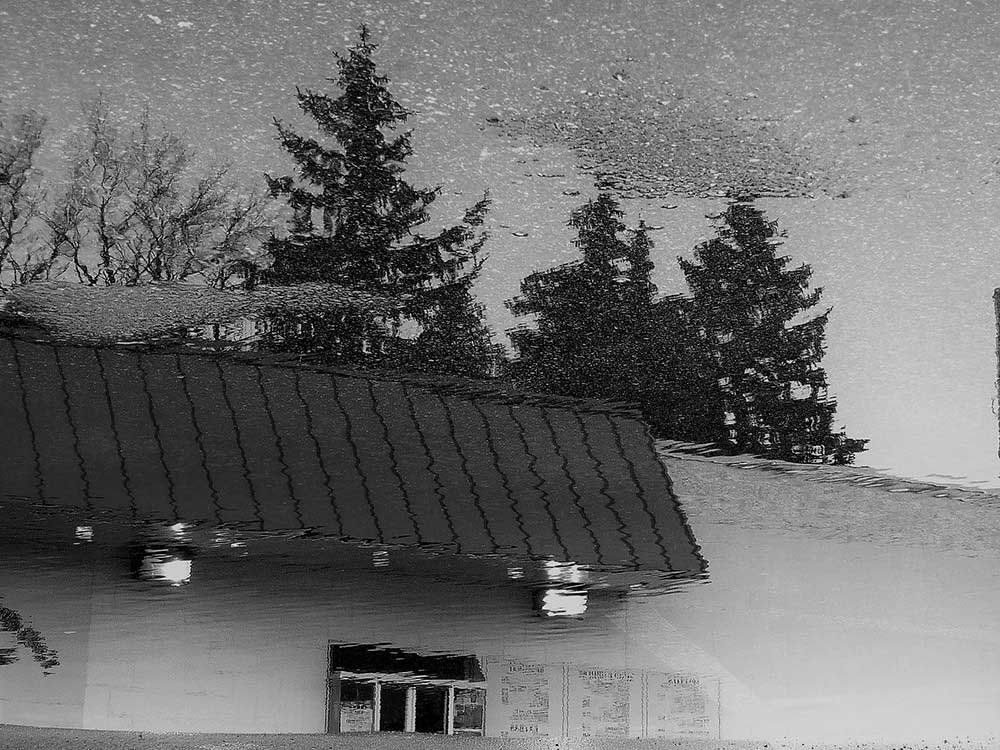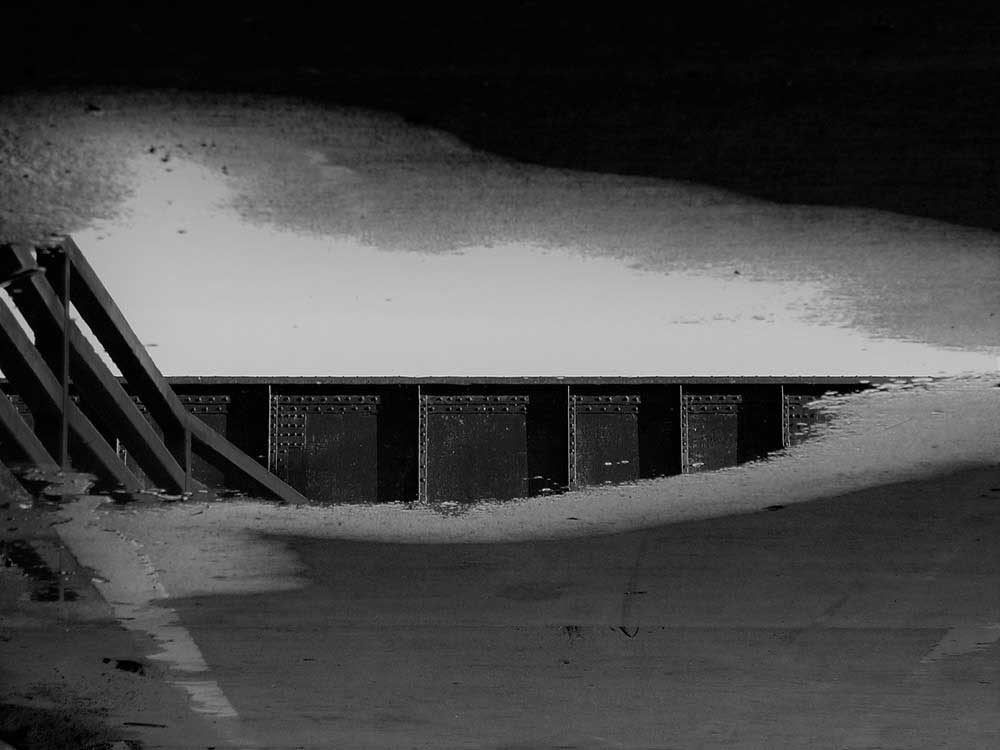[Preface: “Moisture possesses the power to transform the mundane to something magical. Look at the sky in the morning, or every moment of the day, as light sketches with moisture right before your eyes. Moisture can also turn an innocuous setting to a sinister scenario. It is, unequivocally, the most powerful and translucent terrestrial element, yet, it is opaque in its power. Moisture has an enormous influence on the photographic aesthetic. In fact, light coursing through moisture, yields the most surreal and startling images. Moisture is a profound filter that rejects visual platitude and banality.”]
Water! The cytoplasm inside of our cells is water. Life took shape in water, and is dependent on it. One oxygen atom and two hydrogen atoms constitute what we refer to as “H2O.” Oxygen is very electronegative.
In other words, it hogs all electrons to itself. A selfish element, I suppose. Hydrogen, provides a covalent bond in one of its atoms, and despite oxygen’s fame, it’s hydrogen that gives water its character: a fluid state, its unfathomable buoyancy and cohesion.
It’s this unyielding cohesion that makes water infinitely special, and its preponderance over all other elements and living creatures. Photographs of deep moving water, induces that synesthetic experience in us, we hear water when we see pictures – they evoke horror in the fury of water. The 56,000 tons Titanic floated in a 17 foot shallow Southampton estuary, before its maiden and last voyage. Water, you see, hates to be displaced. And, when it’s displaced, it wreaks havoc on every notion and illusion of control we entertain and assume.
Indeed, a drop of water is an ocean of contemplation. Since the dawn of man, water had been used, and abused, but had remained an inscrutable phenomenon. Thales, 620BC-546BC, from Miletus, Greece, was the founder of the School of Natural Philosophy. He was the first scientist-philosopher who investigated and postulated on the basic principles of the originating elements of matter.
Thales claimed water as the fundamental element – that water is nature, the originating principle. However, from the ancient philosophers of Miletus, to the modern thinkers of Athens, Greece, water’s visual beauty remained unexplored. How it’s various forms shape our myriad atmospheric conditions that influence our mood. Only in the early Renaissance did the painters begin to grasp and address its incredible character.
Water had fascinated painters since the Renaissance, from Gustave Caillabotte to Monet. Who can forget Caillabotte’s “Paris street on a rainy day,” the centerpiece of the impressionists collection at the Art Institute of Chicago? But, one particular painter comes to mind, who managed to capture the impact of moisture on light, and their combined impact on our mood: J. M. W, Turner. And, indeed, Turner traveled to Scotland, Ireland and Holland to see the effects of water, in the form of clouds, fog, mist and rain at sunrises and sunsets.
While the source of light is direct and constant, it’s the moisture that gives it a variable character. Various atmospheres materialize in various manifestations of moisture in the air and light, like fog, mist, small and big drizzles, falling and blowing snow. Take out the clouds, which is moisture, and it’s the same piercing sun day after drying day. Moisture manufactures the magic daily, the mystery, as the day breaks over the horizon. It’s arresting, every passing moment.
As photographers, we sweat for original ideas, authenticity in projects, and as a consequence, we rummage our minds for what we can, to unwittingly, contrive or cobble something within the confines of our creative space. It’s the opposite for me. The environment outside, has a plethora of unresolved and unattended ideas. One of them has been moisture, and how it induces a photographic aesthetic its own. What would our world look like through moisture and it’s various manifestations: fog, rain, and still water? A world through ten thousand fish eyes lens?
For years, I have enjoyed the abstract, as well as impressionistic paintings through the windshield of our car and windows during rainfall, foggy days, and reflected worlds in still waters. I hated the windshield wipers, for they cleared off intriguing visuals. So much that even under heavy of rain, I resisted turning on the windshield wipers, driving my family to sweat with anxiety during our trips.Light, as well as heavy drizzles are my favorite occasions, and so are the shallow puddles of water that reflect deep images that appear like Joseph Cornell’s three-dimensional illusions. The Windshield turns into one huge plate of small fish eye lens, distorting shapes, colors and compositions, rendering the mundane, to something wondrously inexplicable! My objective in these photographs is not to seek clarity, rather, it’s the abstraction. Clarity I believe is an illusion, because, what one person sees will never be the same as what the other will read, which, begets us infinite interpretations, and every interpretation, every angle, is the conviction of its owner. Clarity is, unequivocally, arbitrary, therefore, it is abstract, and it is at best a good debate. Pursuing clarity in photography is like trying to chase down the horizon. The quicker we realize that abstraction is ambiguity, and it is indeed reality, the faster will derive the clarity of aesthetic pleasure.
I would like to present some of the photographs I have taken through fog, rain and shallow puddles of collected rain water, the most challenging being the windshield of my car. It was like driving while seeing through a layer of moving gel on the windshield. The shots were deliberately taken with a basic digital camera in one hand, while driving with the other in the rain, without wipers on – it was dangerous, but, aesthetically exhilarating!



